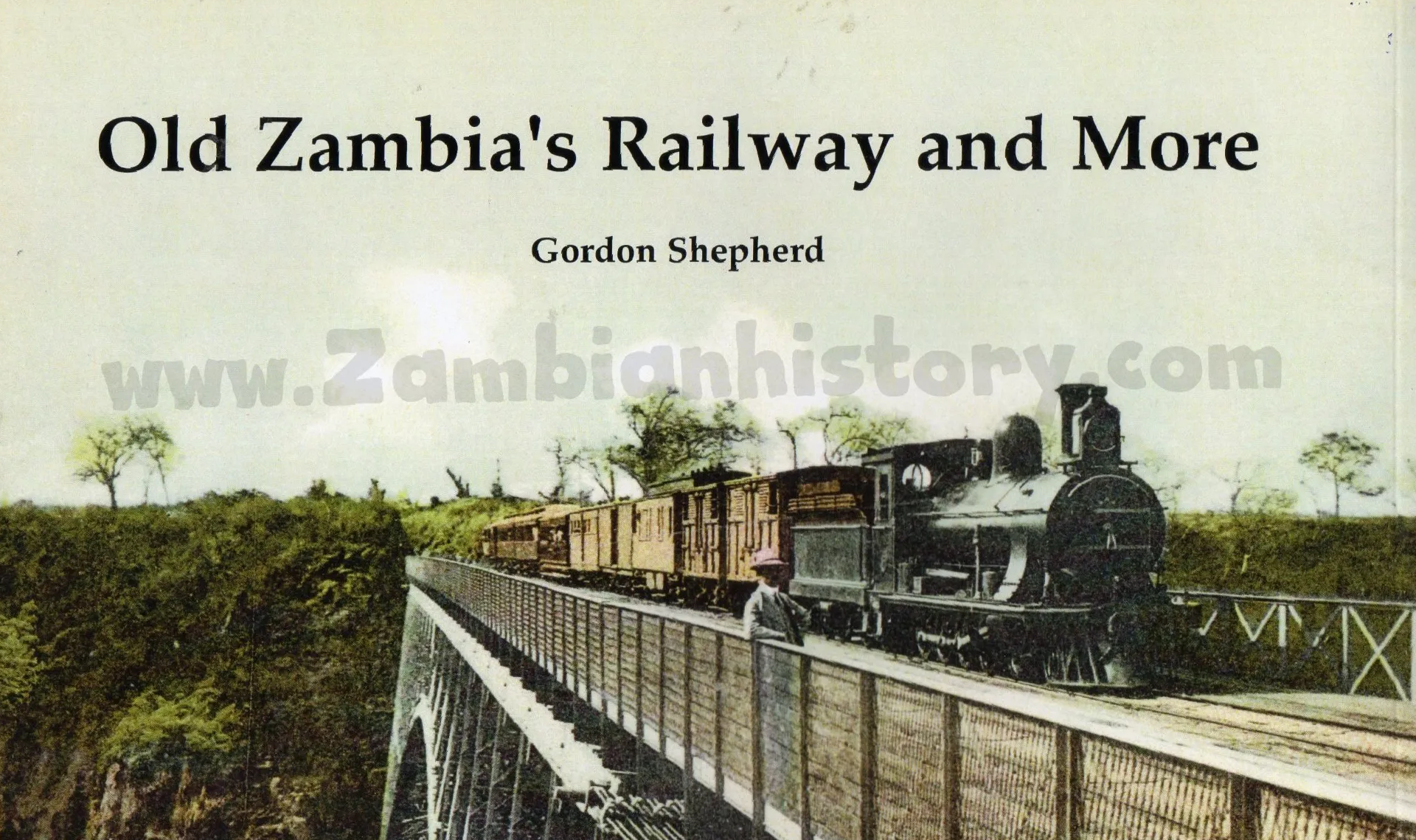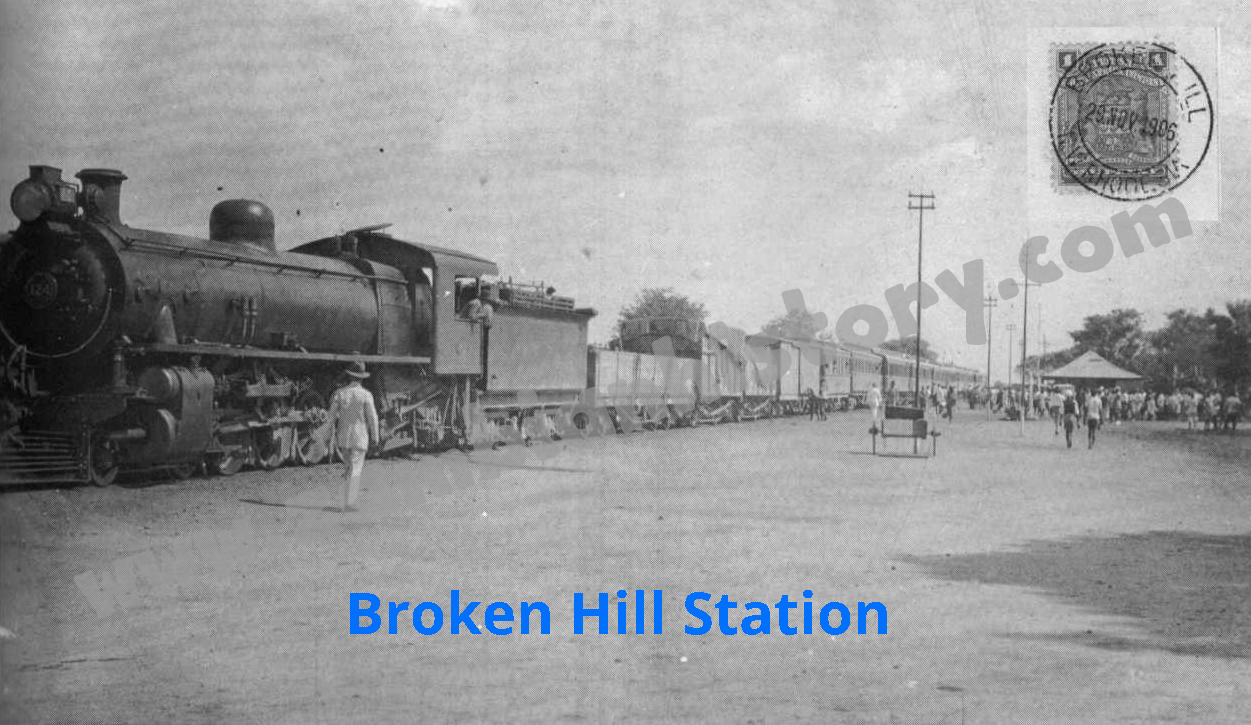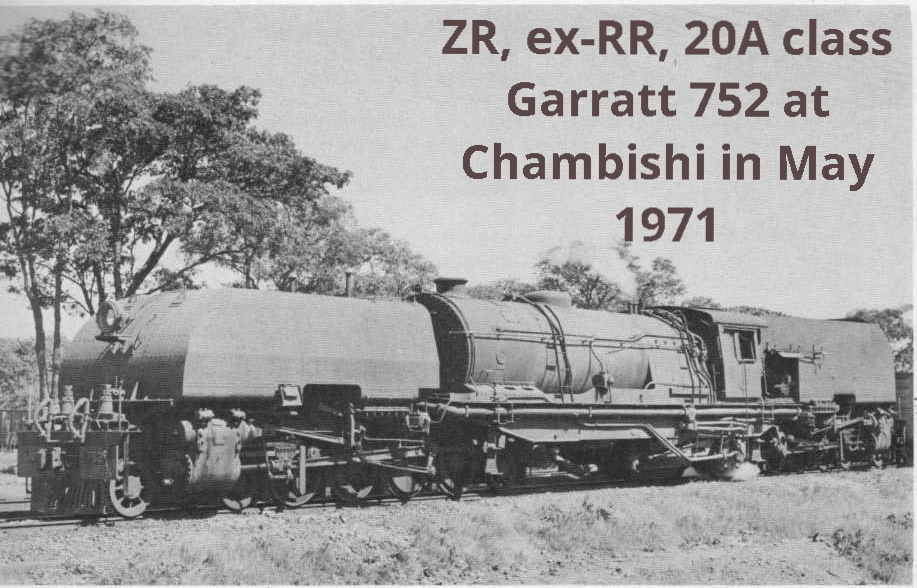Old Zambia’s Railways
North Western Rhodesia and North Eastern Rhodesia were administered as separate entities by the British South Africa Company until 1911. It was then realised that it made economic sense to amalgamate the territories to form the country of Northern Rhodesia with Livingstone as the capital. Settler unrest over who owned land and minerals - the company or the Crown - came to a head in 1923 when the Devonshire Agreement gave nearly £4 million to the B.S.A.C. to relinquish company rule. Northern Rhodesia became a British Protectorate in 1924.
Zambia's Railway and More" is a snapshot of Zambia's earlier past. This huge area of land started with no name, was not a political unit and nestled between two Portuguese territories - present day Angola and Mozambique. Some communication between the two had started but Portugal's claim to own the territory in between was tenuous at best. The disputed territory had been visited by European missionaries as early as 1878 and mission stations were established in the Barotseland area.
In May 1890 Germany acquired an 80 mile frontage to the Zambezi as far as Kazungula (the Caprivi Strip) and so South West Africa (Namibia) expanded. At the same time the mighty Zambezi River was declared an international waterway. To the north-west King Leopold of Belgium was building the Congo Free State.
North or south of the Zambezi River never held much attraction to Queen Victoria and her governments. Instead it was the fanatical vision of a Cape politician, Cecil Rhodes that created present day Zambia and moulded its future. On 29th October 1889 Rhodes succeeded in negotiating with Victoria's government a Royal Charter for his British South Africa Company. The company was empowered to make treaties, declare laws, keep the peace, run a police force, buy up business opportunities, provide an infrastructure and promote and support trade and industry. The charter had no northern limit of operation.
Mashonaland was occupied in 1890, Matabeleland in 1893 and Rhodesia formed in 1894. In 1897 the B.S.A.C. moved north of the Zambezi and began negotiations with King Lewanika, the Paramount Chief of Barotseland. The first company station was established on the north bank of the Zambezi at Victoria Falls.
History of rail transport in Zambia
The British South Africa Company (BSAC) was responsible for building the Rhodesian railway system in the period of primary construction which ended in 1911, when the main line through Northern Rhodesia reached the Congo border and the Katanga copper mines. Railway construction in British South Africa Company-administered Northern Rhodesia (now Zambia) was undertaken by Rhodesian Railways, established in 1899, as an extension of the system in Southern Rhodesia. Railway development was driven by Cecil Rhodes, whose original intention was for a railway extending across the Zambesi to Lake Tanganyika, popularly considered as part of a great Cape-Cairo railway linking all the British colonies of Africa.
The railway reached Bulawayo in 1897, and was extended to the Victoria Falls in 1902. Lines were built in the 3 ft 6 in (1,067 mm) or Cape gauge. The railway arrived in the future Zambia early in 1905, when the 150 km (93 mi) long Livingstone–Kalomo line was built in advance of completion in September of that year of the Victoria Falls Bridge from the then Southern Rhodesia to Livingstone. The first wagons on the line were hauled by oxen, then a single locomotive was conveyed in pieces by cableway across the gorge where the bridge was being built to start up operations to Kalomo in advance of the main line connection.[3]
The next section was to Broken Hill, (now Kabwe), which the railway reached in 1906. BSAC was assured that there would be much traffic from its lead and zinc mines, but this did not materialize because technical mining problems. The railway could not meet the costs of the construction loans, and the company faced major financial problems. The only area likely to generate sufficient mineral traffic to relieve these debts was Katanga. Another major bridge was required to cross the Kafue River and the 427 m (1,401 ft) long Kafue Railway Bridge, the longest on the Rhodesian Railways or Zambian Railways network, was completed in 1906. Initially, the Congo Free State had concluded that Katanga's copper deposits were not rich enough to justify the capital cost of building a railway to the coast, but expeditions between 1899 and 1901 proved their value. Copper deposits found in Northern Rhodesia before the First World War proved uneconomic to develop.[2]
In Zambia more lines were built. In the Copperbelt, a connection from Ndola to Chingola via Kitwe was opened approximately parallel to the line in the Belgian Congo. In 1923 to 1924, the Zambezi Sawmills Railway - later Mulobezi Railway - was built as a private railway for the extraction of teak from Mulobezi and Kataba to its north. It linked with several branch lines, and also operated passenger services as far as Kataba. A line from Choma to Masuku was also built in the southwest of the country and three short branch lines in the Copperbelt, leading to Chililabombwe, Mufulira and Luanshya. Until the mid-1960s, sleeper trains went from Ndola via Livingstone to Bulawayo in what was then Southern Rhodesia.
https://en.wikipedia.org/wiki/History_of_rail_transport_in_Zambia
Rhodesia Railways, The Early Years
First train from Fontesvilla to Chimoio, Portuguese East Africa, 1894
https://www.rhodesia.me.uk/rhodesia-railways-the-early-years/
The development of the railways in Zimbabwe was directed by several considerations among which was the need to establish a line to serve the mining and agricultural enterprises which were fast being established along the Zimbabwean watershed and elsewhere, and to link the land locked country with sea-ports in Mozambique and South Africa.
RAIL LINE REACHES BROKEN-HILL - 1909
Construction of the Rhodesian railways railway line by the British South Africa Company (BSA) reached Broken-Hill (Kabwe) in 1909.
In the pic, indigenous workers busy at work on the rail line - Broken-Hill (1909) above
Zambia
Steam activity on the main line came to an end in mid-1971, when the second batch of diesels was delivered from General Electric of the USA, and is now confined, it is believed, to less than a dozen engines in the Livingstone area, where 20th/20A class Garratts are used for shunting and for trip-working to the Victoria Falls bridge, and 12th class engines work the former Zambesi Saw Mills Railway. This line was taken over by ZR in 1972 but most of its famous collection of ancient ex-RR locomotives are still dumped at its sheds in Livingstone and Mulobezi.
Zambia is well provided with hotels, especially in the Livingstone area, and with internal air, rail, and bus services between main centres. The completion of the Tanzam Railway will make it possible to travel through to East Africa by train. This journey has long been possible by bus but is recommended only to the most determined and hardy. It is advisable to practise photography with great caution, as Zambians are very security-conscious, and to obtain permission, if possible, well in advance from the Ministry of Transport in Lusaka.
Details of ZR steam locomotives are incorporated in the Rhodesia Railways list. Preserved xomotives (though 117 would be better described as “not scrapped”, having been used for staff training before the advent of the diesel and subsequently merely left in situ) are:
No Class Type Builder No Date Location/Notes
70 7th 4-8-0 Neilson Reid 5792 1910 Livingstone Museum; ex ZSMR
117 9A 4-8-0 Alco 56724 1916 Kabwe, ZR hostel
SECRETS OF ZIMBABWE
E. D. HAMER DISCLOSESTHATRHODESIA RAILWAYS ACQUIRED MANY NEW DIESEL LOCOMOTIVES IN SPITE OF SANCTION
The recent dramatic demise of Rhodesia and consequent birth of Zimbabwe has had two major repercussions affecting the railway enthusiast fraternity. Firstly, it is now presumed safe to visit the territory and inspect and photograph all those marvellous Beyer-Garratts to one’s heart’s content, without the risk of being either blown up or arrested, and secondly—with certain reservations—information can now be legally published concerning the “Illicit” fleet of diesels that was variously acquired during the years following Mr. Ian Smith’s Unilateral Declaration of Independence in 1965.
Read more..
Luangwa Bridge
The Luangwa Bridge is the only large bridge and the principal engineering challenge on Zambia's Great East Road, crossing the lower Luangwa River where it flows from the Luangwa Rift Valley into the Zambezi valley.
The river is 250–400 m wide in this area, and though in the dry season it may be confined to a shallow channel meandering across sandbanks, at the end of the rainy season any bridge has to be able to withstand a full-width, deep and fast-moving flood. The Great East Road runs for most of its length on watersheds at an elevation of around 1000 m, but the river is at an elevation of 390 m at the bottom of the valley. The bridge approaches have to contend with steep rugged slopes and deep ravines covered in forest or thick bush; the area is remote and about 250 km from the nearest city, Lusaka.
The First Luangwa Bridge was built in Zambia's colonial era in 1932 as a narrow 300 m long wide steel and reinforced concrete deck on concrete piers and columns, financed, like the Chirundu Bridge and Beit Bridge by the Beit Trust. Its proximity to Mozambique (about 2 km) and Rhodesia (60 km), as well as its status as the only access point within the country for Zambia's Eastern Province, makes it strategically vulnerable in any conflict. After Zambia's independence in 1964, President Kenneth Kaunda's support for freedom fighters in neighbouring countries led to the bridge being destroyed in revenge.
The Second Luangwa Bridge (opened in 1968) was built quickly above the first, with aid from Britain which had been the colonial power in Zambia. It is a cable-stayed bridge designed by Freeman Fox & Partners and built by the Cleveland Bridge Company. It has a composite steel-reinforced concrete deck 9.8 m wide, two H-shaped steel pylons 42 m tall on two reinforced concrete piers, and steel cables. The main span is 222 m with approach spans of 40 m each.
In 1979 the military of Zimbabwe-Rhodesia destroyed the bridge as well as the Chambeshi road and rail bridges in order to stop the planned invasion of their country by the Zimbabwe People's Revolutionary Army (ZIPRA).
After another two decades of use, the bridge was rehabilitated under a project of the National Road Fund Agency funded by Danish aid.
https://www.primidi.com/luangwa_bridge
The tale teeth tell about the legendary man-eating lions of Tsavo - East Africa
So, her findings on lions is actually lioness it seems…canine tooth/teeth that is microscopically and is actually hinged on a clear cast with three dimension on a surface textures, now talking of and on the parallels to the original of a lioness canine teeth/tooth enamel is natural degrading through age process. Surely that would reveal the outer enamel surface but nothing in terms of anything else beyond or above that…I am totally at a loss. .what and how intense psychological / biological findings are the results that are captured and resulting in such behaviours as only hunting down humans….Lions and Lioness DO NOT differentiate in their hunt for what they want for their menu… the move from one hunting ground to another.it is ad-hoc natural reaction in hunting down a prey or through ambushing no matter what is available.. Female lions famously hunt their prey in packs…did they all suffer from the same dental damages?
In the Genesis of the Kenya colony by R.O Peterson who was involved in the laying of railway line, he clearly states…an incident with lions, of a Greek contractor who was lucky to be alive…and 12 miles beyond Voi working at Ndii, one of his friend O’Hara a custom officer was killed.. in fact Voi area too was infested with Lions.
He further stated “Man-eater, finding merely a number of human skulls and skeletons which were further evidence of the cause of the former mystery …talking about worker that went missing, in fact this was the caravan route for potters too. It was teaming with animals of all sorts..
Reaching Kenani is when they got beyond the beat of this man-eater…menu sadly included 17 people killed.
This incident happened some 120 yrs ago and in the olden days Institutions and Individuals looking for an expert Taxidermist were nil…
Also Institutions and individuals looking to buy commission quality taxidermy were zero, there were no Accredited memberships as such…in fact, if you look closely at the state of these poorly kept beasts they have shrunk in size and are hardly recognised as man-eating lions, so the question is raised.."what of the internal organs"..etc …so how is it they went to such an extent in working all that out in what they are saying…it is truly unbelievable…
Attached below - The Man-eaters of Tsavo
This book recounts the author's experiences while overseeing the construction of a railroad bridge in what would become Kenya. It is most widely known for recounting the story of a pair of lions that he killed, known as the Tsavo maneaters.
This book has 168 pages in the PDF version, and was originally published in 1908.








